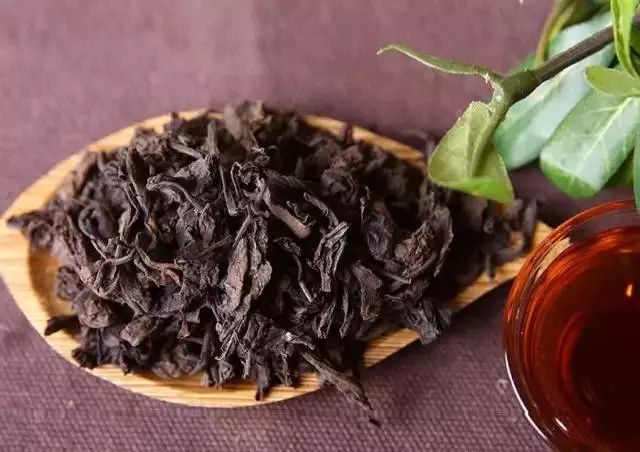Pu-erh Tea " A Natural and Effective Medicine for Diabetes"
Hypoglycaemic Effects of Pu-erh Tea
Pu-erh tea is produced from the leaves of large-leaf tea species (Camellia sinensis var. assamica) in the Yunnan province of China and divided into ripened pu-erh tea (RIPT, with pile-fermentation) and raw pu-erh tea (RAPT) according to processing methods. Diabetes mellitus is a complex metabolic disorder, which has become a growing global health problem and caused increasing premature mortality and healthcare costs. According to the International Diabetes Federation, there are an estimated 451 million individuals (age from 18 to 99) suffering from diabetes, and the number is predicted to be 693 million by 2045. Theestimated healthcare expenditure relating to diabetes reached 850 billion USD for adults in 2017. Therefore, looking for antidiabetic functional foods, which might have low side-effects and low cost, has a significance to global health.
Tea is one of the most popular world-wide beverages and has various biological activities. In recent years, pu-erh tea becomes more and more popular in Southeast Asia due to its multiple health benefits, different tastes, and special flavour. Pu-erh tea is produced from the sun-dried leaves of Camellia sinensis var. assamica in Yunnan province, China. Due to the different processes,
Pu-erh tea can be categorized into raw pu-erh tea (RAPT, directly compressed and shaped into cake) and ripened pu-erh tea (RIPT, pile-fermented by microorganisms). The participation of the pile fermentation process is the biggest difference between RIPT and RAPT, and brings great distinctions on infusion colours and tastes, even the chemical constituents and biological activities in our study. Currently, some studies have reported the anti-diabetic effect of pu-erh tea. Wang et al. found that flavanols from the water extract of pu-erh tea showed an inhibition effect on α glucosidase, suggesting potential hypoglycaemic effects.

To prove the hypoglycaemic effect of pu-erh tea some experiments were taken out on mice after inducing temporary diabetes in them intentionally also a comparative study between RIPT and RAPT was carried out on pharmacological activity and chemical constituent in that experiment. The anti-diabetic activities of RIPT and RAPT were evaluated in streptozotocin-induced (intentionally induced) diabetic Wistar rats. Then, the constituents of the RIPT and RAPT were identified in these rats showing us the different between the constituents of RIPT ripened pu-erh tea and RAPT raw pu-erh tea.
EXPERIMENTAL CONDITIONS AND REQUIREMENTS
The experiments were taken out in a very controlled environment, the tea extract was prepared with process similar to the general drinking habit in China. Each sample (1000 g) was extracted twice with 10 L and 7 L distilled water each for one hour at 100 C, respectively. After filtration, two solutions were combined and concentrated at 55 C, and then lyophilized.
Male Wistar rats (180–220 g) were purchased from Beijing Vital River Laboratory Animal Technology Co., Ltd. (Beijing, China). The rats were provided with a standard rodent diet and free access to water, and were maintained at a temperature of 20– 22 C. The animals and protocols for this study were approved by international ethical guidelines and the Institutional Animal Care and Use Committee of Dalian Medical University, with the permission number of SCXK 2013-0003.
Seventy rats were fed with a high-fat, high-sugar diet (HFHSD) (D12451, 45% calories from fat) instead of standard chow, and had free access to water. On Day 14, the rats were injected intraperitoneally with 40 mg kg1 streptozotocin (induced diabetes.). On Day 21 and Day 28, oral glucose tolerance tests (OGTTs) were performed. A total of 30 rats met the standard of diabetes, with 2h-PBG levels ranging from 16.7 mmol /mL to 24.0 mmol /mL in both OGTTs and were selected as diabetic rats. They were divided into 6 groups each having 5 rats and each group were fed with different diets including Normal diet and different dosage of RIPT and RAPT extracts and check for their diabetes level regularly.
These rats were kept in a very strict experimental conditions feeding the different groups the extracts of RIPT and RAPT continuously and checking their sugar level continuously by regular tests. There faeces were also collected to check for different constituents of RIPT and RAPT.
OBSERVATION
In this study, the extract of RIPT and RAPT showed alleviation effect of hyperglycaemia andhyperlipidaemia with more potent activity in RIPT extract. Compared RIPT with RAPT, the key difference is the manufacture process, specially the microbial pile-fermentation. Manymicrobes, including Aspergillus spp., Penicillium, Rhizopus, Saccharomyces, and Bacterium, play a key role in the post fermentation process of RIPT manufacture, while RAPT is processed with natural aging only. As various effects of different microbes, some components could be dramatically changed during the fermentation process. In RAPT, the main components are catechins, tea polyphenols, soluble sugar. On the contrary, the contents of caffeine, gallic acid was increased after fermentation. Researches have shown that the gallated catechins would have a gradually decomposing process to produce catechins and gallic acid during pile-fermentation, therefore, the content of gallic acid was increased.
19 Components were detected in RIPT only, including puerin I-VIII, 8-carboxyl- (+)-catechin or its isomers, etc. puerin I-VIII came from catechins and theaninethrough fungal fermentation and could be quality control markers and authentication for RIPT in addition, puerin I was reported to exhibit hypoglycaemic and hypolipidemic effect through inhibiting a-glycosidase and activating low-density lipoprotein receptor.
Therefore, puerins, especially the puerin I, might contribute to the more potent anti-diabetic effect in RIPT. When compared HPLC-PDA result of mutual components detected in RIPT and RAPT, 6 components, including quinic acid, gallic acid, theophylline or its isomers, caffeine, apigenin-6-C-a-Larabinopyranosyl-8-C-b-D-glucopyranoside, and ellagic acid, wereincreased after pile-fermentation. As published research, caffeine could promote the expression of glucose transporter 4 to dispose glucose and result in alleviating diabetes. In our study, caffeine was significantly increased after pile-fermentation, which wouldbe related to the better hypoglycaemic effect of RIPT.
Meanwhile, gallic acid was also report to attenuate insulin resistance and enhances glucose uptake through activating peroxisome proliferator-activated receptor g and glucose transporter, respectively. The increase of gallic acid content in the RIPT in our study would also be relevant to the better hypoglycaemic effect.
CONCLUSION
This experiment quite clearly explained that pu-erh tea has the great capability to serve as a natural medicine for diabetes. Ripened pu-erh tea is more potent as compared to Raw pu-erh tea for hypoglycaemic effect. These results indicated that RIPT could be a functional beverage for alleviating diabetes.

By; M. Sarosh
